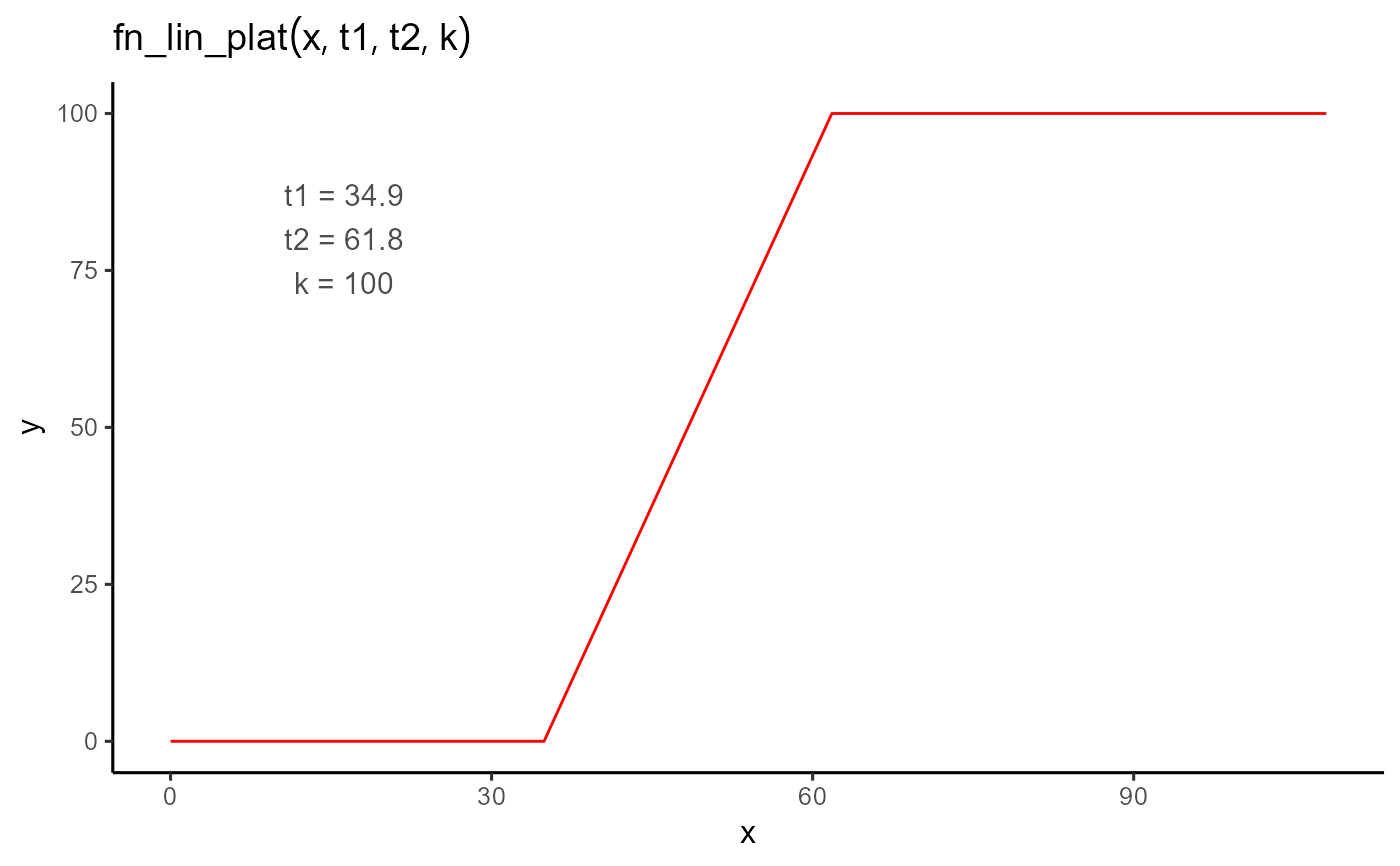A simple piecewise function that models a linear increase from zero to a plateau. The function rises linearly between two time points and then levels off at a constant value.
Arguments
- t
A numeric vector of input values (e.g., time).
- t1
The onset time of the response. The function is 0 for all values less than
t1.- t2
The time at which the plateau begins. Must be greater than
t1.- k
The height of the plateau. The function linearly increases from 0 to
kbetweent1andt2, then remains constant.
Details
$$ f(t; t_1, t_2, k) = \begin{cases} 0 & \text{if } t < t_1 \\ \dfrac{k}{t_2 - t_1} \cdot (t - t_1) & \text{if } t_1 \leq t \leq t_2 \\ k & \text{if } t > t_2 \end{cases} $$
This function is continuous but not differentiable at t1 and t2
due to the piecewise transitions. It is often used in agronomy and ecology
to describe growth until a resource limit or developmental plateau is reached.

